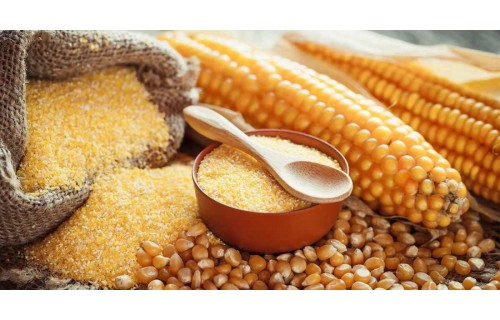Перекачка нефти - краткое руководство

Растительное масло - один из основных продуктов питания, производимый в разных широтах с древнейших времен. Его различные сорта часто определяют характер местных кулинарных традиций. В конце концов, нам трудно представить себе средиземноморскую кухню без характерного вкуса оливкового масла или азиатские блюда без нескольких капель кунжутного масла. На территории современной Польши, населенной нашими славянскими предками, способы извлечения масла из семян были известны уже в начале первого тысячелетия нашей эры. Однако до XIX века производство масла в нашем регионе было в основном неиндустриальным. Это означало, что небольшие общины или поместья производили масло для собственных нужд. Сегодня различные сорта масла можно купить в любом магазине, но практика самостоятельной выжимки масла по-прежнему имеет множество неоспоримых преимуществ. Особенно сегодня, когда современные маслопрессы стали такими же компактными, эффективными и простыми в использовании, как и раньше.
Из чего отжимать масло? Не только рапс и подсолнечник....
Хотя самыми популярными сортами растительного масла в Польше являются рапсовое и подсолнечное, выбор для владельца маслопресса гораздо шире. Популярным альтернативным маслом является, например, льняное масло. Это одно из самых полезных масел, богатое омега-3 жирными кислотами (альфа-линоленовая кислота). В Польше лен выращивают в основном на востоке и юге страны, а льняное масло широко используется в кулинарии (в основном для салатов и в качестве диетической добавки) и в косметике. Лен также используется в текстильной и строительной промышленности. Чуть менее популярными сортами являются также соевое масло, которое используется как в пищевой, так и в кормовой промышленности, касторовое масло, применяемое в косметике, и масло из семян сои, которое набирает популярность.
Краткий обзор оборудования - типы маслопрессов
Оборудование, используемое для извлечения масла из семян масличных культур, - это, как несложно догадаться, маслопресс
. Однако, как это часто бывает, дело обстоит несколько сложнее, и на рынке представлено несколько типов этого оборудования. Маслопрессы делятся на несколько типов: - наиболее часто используемые в промышленности, они отжимают масло с помощьювращающегося червяка, идеально подходят для горячего и холодного прессования.
Гидравлические прессы
- используют гидравлическую силу для прессования масла, идеально подходят для производства масла холодного отжима, имеют более высокое качество масла.Дисковые прессы
- используют вращающиеся диски для отжима масла, применяются на средних производствах.Прессы для экстракции растворителями
- используют химические растворители, обеспечивают высокую урожайность, но снижают качество масла.Горячий или холодный?
Когда речь заходит о типах маслопрессов и методах извлечения жиров из семян, невозможно обойтись без основного различия:
горячее прессование и холодное прессование. Но имеет ли это значение? Ответ... да - если речь идет о масле, произведенном для пищевых целей. Масло холодного отжима считается более полезным, чем масло горячего отжима, в основном из-за разницы в температуре и процессе производства. При холодном отжиме сырье (то есть семена) не нагревается выше 40-45°C. Это позволяет сохранить большинство ценных питательных веществ, таких как ненасыщенные жирные кислоты (омега-3, омега-6), витамины (например, витамин Е) и антиоксиданты. Благодаря этому масло сохраняет всю свою питательную ценность и оказывает благотворное влияние на здоровье, поддерживая сердечно-сосудистую систему, иммунитет и кожу. Тепловое прессование, как следует из названия, предполагает использование более высоких температур (часто выше 100°C), что приводит к потере многих питательных веществ и снижению качества масла. Кроме того, в результате этого процесса могут образовываться неблагоприятные соединения, такие как окисленные жирные кислоты, вредные для здоровья. Стоит отметить, что масла, полученные путем термического прессования, имеют более длительный срок хранения. Однако их питательная ценность значительно ниже.Поэтому масло холодного отжима - гораздо более подходящий ингредиент для ежедневного рациона.
Для масел, используемых в ремесле или консервации, температура прессования не играет столь важной роли. Хотите узнать больше? Рекомендуем нашу статью о маслах холодного отжима - здесь.От чего еще зависит качество масла?
Хотя метод прессования имеет решающее значение для свойств конечного продукта, существует ряд других факторов, которые влияют на качество готового масла. Очевидно, что важен тип сырья - здоровые, спелые семена или плоды дают лучшее масло - это логично. Содержание влаги в семенах имеет немаловажное значение: слишком высокое содержание влаги может ухудшить качество масла. Скорость и время прессования также влияют на конечный продукт - длительный процесс может привести к окислению масла.
Как начать прессовать масло?
Отжим масла - это предприятие, которое может быть реализовано в различных масштабах - от местного производства для личного использования до крупных производственных линий, ориентированных на получение прибыли и оптимизацию. Независимо от ваших личных предпочтений в отношении объемов производства, в самом начале стоит ответить на вопрос о предпочтительном сырье и его доступности. Следующий шаг - выбор подходящего оборудования. На рынке представлены шнековые, гидравлические и небольшие модели холодных прессов, которые больше подходят для домашнего использования или небольших фермерских хозяйств. Важно выбрать машину с подходящей мощностью для эффективного прессования в зависимости от масштабов производства. Следующий шаг - подготовка сырья, то есть очистка семян от примесей и, возможно, их сушка. Стоит также обратить внимание на качество сырья, так как от этого зависит качество конечного масла. Стоит помнить, что после прессования масло необходимо отфильтровать, чтобы избавиться от остатков семян. Также следует позаботиться об обеспечении надлежащих условий хранения - масло должно храниться в прохладном темном месте, чтобы предотвратить окисление. Наконец, стоит ознакомиться с нормативными актами, регулирующими производство и продажу масла, чтобы работать легально.








